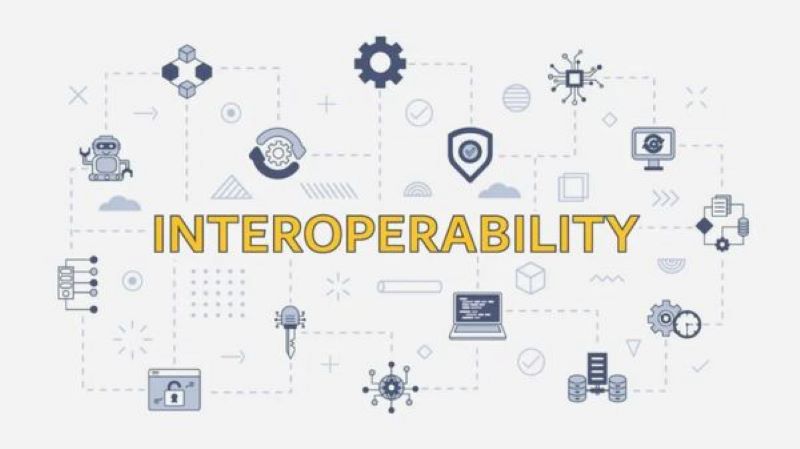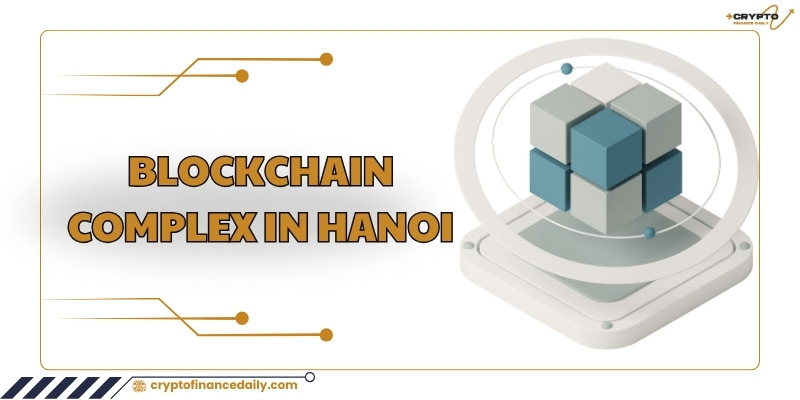Blockchain interoperability: the key to unlocking a seamless, interconnected decentralized world. But what does it mean, and how will it revolutionize the way we interact with blockchain technology?
What is Blockchain Interoperability?
Blockchain interoperability is the ability of different blockchain networks to communicate, share data, and transact with each other seamlessly, as if they were a single unified system. This interconnectedness enables cross-chain transfers of assets, data, or information, unlocking a world of possibilities for decentralized applications and services.
Types of Blockchain Interoperability Solutions
Different types of blockchain interoperability solutions have emerged to address the challenges of compatibility between various decentralized systems. These solutions aim to facilitate seamless communication and interaction between diverse blockchains, allowing them to exchange data and assets effectively.
One such solution is cross-chain bridges, which act as a bridge between different blockchains, enabling the transfer of assets from one chain to another. These bridges typically involve locking the original asset on the source chain and creating a corresponding representation on the destination chain, ensuring the secure movement of assets across networks.

Another approach is atomic swaps, which enable direct peer-to-peer exchanges between different blockchain networks without the need for intermediaries. Atomic swaps provide a trustless and decentralized way for users to trade digital assets, eliminating the need for centralized exchanges.
Sidechains offer yet another interoperability solution. They are separate blockchains that are connected to a main chain, allowing for the transfer of assets between the two. Sidechains provide a way to experiment with new features and functionalities without affecting the main chain, while still maintaining connectivity and interoperability.
These are just a few examples of the different types of blockchain interoperability solutions available. Each solution has its own strengths and weaknesses, and the choice of solution will depend on the specific requirements of the use case. As blockchain technology continues to evolve, we can expect to see even more innovative and sophisticated interoperability solutions emerge, further enhancing the connectivity and collaboration between different blockchain networks.
The Importance of Blockchain Interoperability
Blockchain interoperability is crucial for the advancement of decentralized systems. By enabling seamless communication and interaction between different blockchain networks, it fosters collaboration and innovation, allowing developers to create more powerful and versatile applications that leverage the strengths of multiple blockchains.
One of the key benefits of interoperability is the ability to transfer assets across different blockchains seamlessly. This expands the utility and liquidity of digital assets, making them more accessible and valuable to users. Additionally, interoperability addresses scalability concerns by distributing transactions across multiple networks, thereby improving overall system performance and reducing the risk of congestion.

Furthermore, interoperability mitigates the risk of single points of failure by reducing reliance on a single blockchain. In the event of a network outage or security breach, operations can continue through alternative networks, ensuring continuity and resilience.
Overall, blockchain interoperability plays a pivotal role in unlocking the full potential of decentralized systems. By breaking down barriers between blockchains, it fosters collaboration, enhances asset liquidity, improves scalability, and strengthens the overall security and resilience of the ecosystem. As blockchain technology continues to evolve, interoperability will become increasingly important for driving innovation and creating a more interconnected and efficient decentralized world.
How does Blockchain Interoperability work?
Interoperability Protocols: Cross-chain bridges and connectors act as intermediaries, facilitating the secure transfer of assets or data between blockchains. These protocols define a set of rules and standards for information exchange, ensuring compatibility and maintaining the integrity of the transferred data.
Sidechains: Sidechains are separate blockchains connected to a main blockchain, enabling the movement of assets between them. This approach offers scalability benefits by allowing transactions to be processed on the sidechain, while still maintaining a connection to the main chain for security and consensus.
What are the pros and cons of Blockchain Interoperability?
Blockchain interoperability offers numerous advantages, including streamlined processes, expanded use cases, and increased liquidity of digital assets. By enabling seamless communication and data exchange between different blockchains, interoperability enhances efficiency and reduces the need for manual intervention and intermediaries. This streamlined approach not only saves time and resources but also opens up new possibilities for innovative decentralized applications (dApps) that can leverage the strengths of multiple blockchains. Moreover, interoperability makes digital assets more accessible and usable across different networks, leading to a more dynamic and vibrant ecosystem for users and investors.
However, interoperability also poses certain challenges. The interconnected nature of blockchain networks can introduce additional security risks, as vulnerabilities in one network may potentially impact others. Implementing robust security measures and protocols becomes essential to mitigate these risks effectively. Additionally, achieving interoperability between diverse blockchain protocols can be technically complex, requiring careful planning and expertise to ensure seamless integration and communication between different networks.
Blockchain interoperability is not just a buzzword; it’s a fundamental building block for the future of decentralized systems. By enabling seamless communication, data exchange, and asset transfers between different blockchains, interoperability paves the way for a more interconnected, efficient, and innovative decentralized world. As the technology continues to mature and evolve, we can expect to see even greater advancements in interoperability solutions, unlocking new possibilities and applications for blockchain technology across various industries.
Stay informed about the latest developments in blockchain interoperability and its impact on the financial world with Crypto Finance Daily.



